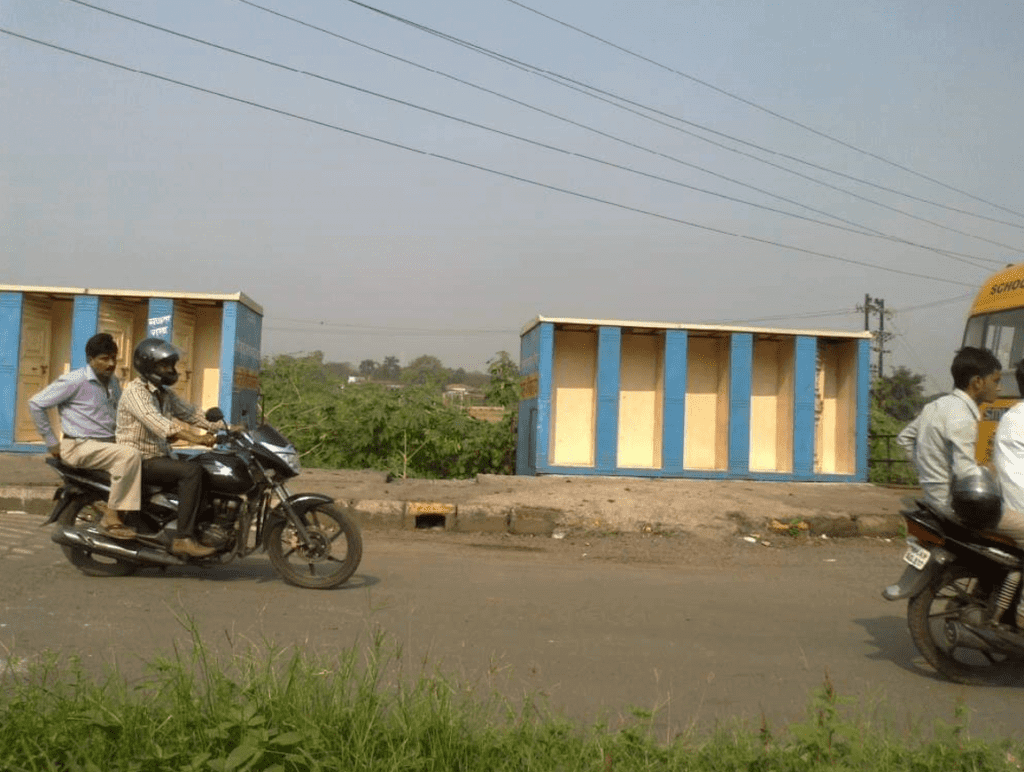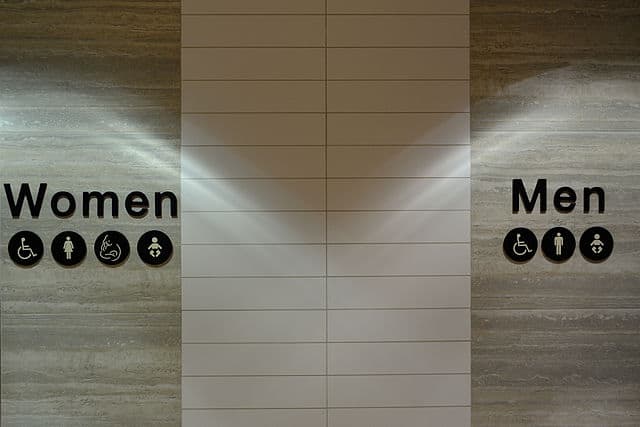Officials claim that they’re constructing public toilets in the city and allocating funds, but previously built toilets in Mumbai are inaccessible and pose risks to diseases.
In October, Jagdeep Desai, wrote on twitter, about a public toilet constructed in Talvali Gaon, Navi Mumbai by the NMMC, claiming it has low ceilings, narrow doors and entrances, and no water. “The lack of consideration in making these roadside restrooms is apparent. Some are made only so they (the authorities) can audit the budgets assigned to them.” Jagdeep said.

The cost of a regular pay-per-use toilet ranges from Rs 2 to Rs 5. This cost is assigned for maintenance. However in poorer settlements in the suburbs of Mumbai, there are no audits on footfall, cleaning staff or how often the toilets are cleaned. On contacting the Slum Sanitation Programme of Mumbai, their officials claimed that they don’t have the data because, usually, this collation is handled by community groups or CBOs (community-based-organisations), who take charge of operations and maintenance of local sanitation services and assets.
In 2017, three men waiting in line to use the public toilet in Indira Nagar, Govandi, plunged into a septic tank, 15 ft below. Two of them suffocated in the sludge since they were unable to get out. The slab that made up the floor collapsed, and the contractor was charged for culpable homicide not amounting to murder.
Women and trans persons do not have dignified access to public toilets

Structural flaws limit access to public toilets, particularly, to women, who require water supply, privacy and menstrual products.
Moreover, there are under 400 women-only public toilets in Mumbai. This means, there is roughly one public toilet for every 15,000 women, which is a stark contrast to the close to 7000 toilets and 3000 urinals which are made for men.
There are only a few public toilets prioritising the needs of pregnant women and disabled people. “Baby changing stations are non-existent in public toilets built near slums” said Imran Khan, a junior engineer, in charge of public toilet construction in the D Ward. This can keep women from heading out in their postpartum period. Not having a changing station can be an unpleasant experience for all involved including the caregiver, the infant, and nearby onlookers.
In February 2021, the Delhi government asked all its departments, including offices, district authorities, municipal corporations, state-run companies and the Delhi Police to have separate and exclusive washrooms for trans persons. “It was stigmatising to use the men’s washroom before transitioning, and now using the women’s washroom attracts questions,” Simran Shaikh, a trans woman, told Hindustan Times.
Currently, there are no such rules in Mumbai. Some people however, are trying to bring reform, like Guardian Minister Aslam Shaikh who recently wrote a letter to the BMC asking for separate public toilets for trans persons.
Read more: Pandemic has hit the transgender community hard and no one is listening
Who uses public toilets?
Siddharth Gavli, a cleaner at the public toilet outside of Goregaon local train station found the job during the pandemic. “I live nearby and most people living around me do cleaning jobs or work as rickshaw drivers. My family needed the money and it was easiest for me to get this job.” The living conditions got extraordinarily worse in the pandemic for cleaners. With the migrant worker crisis, pay per use toilets were made free, to make them more accessible. “However, maintenance of these toilets got more and more difficult by the day, with the revenue stream being cut off, “there was no money to put food on the table let alone buy cleaning supplies” Siddharth told me.
“Most people coming into these toilets are rickshaw drivers, station workers, or labourers,” said Siddharth.
In 2017, BMC asked restaurants to open their toilets to all public with a Rs 5 fee, and malls have always been open to all and free. The urban middle class can enter a restaurant and ask to use a toilet, without raising any eyebrows which is not the case for the poor in Mumbai.
Health hazards
A survey across various Indian cities conducted by Pinkishe Foundation in 2021 found that 90 percent of women avoid public restrooms, often over concerns of cleanliness, availability of amenities, and privacy. Women who habitually limit public restroom use, more frequently reported unhealthy toilet behaviors and Lower Urinary Tract conditions. “Holding in your urine does much more harm than using unclean toilets” Dr Krittika Moghe of Omkar hospital in Kandivali says.
“Some good news is that using a dirty toilet doesn’t necessarily mean you contract Chlamydia, herpes, genital infections, or any other such sexually transmitted diseases, because this bacteria does not survive for much long on these cold toilets, they need a human host to survive and spread. Only in rare cases can you contract a disease, if you rub an open wound against the wet surfaces in the toilet” she said.
Read more: Mumbaikars speak up about the city’s healthcare budget
According to Dr Moghe, using unclean toilets can cause strep throat, staph infections, pink eye, tuberculosis along with other mild rashes and bacterial infections. Staph infections are very contagious and spread from person to person, resulting in boils and blisters, it can also cause food poisoning resulting in nausea, vomiting and diarrhoea. In rare cases, staph infections can turn deadly if the bacteria invades deeper into the body or enters the bloodstream. Staph infections are very common in India. When these toilets are not cleaned, the chances of viruses spreading increase, as viruses and bacteria thrive in unclean, cold and wet environments.
Public toilets near Gateway of India are in horrible condition. Many tourists including foreigners visiting the area are in need of bigger and better toilets here.
But our elected Ministers don’t have time and interest to look after needs of people; women especially…..they are busy quarreling among themselves and gathering money for their elections…there are beggers around/in these toilets many times….citizens need more and posh/clean toilets , why are we paying taxes for?